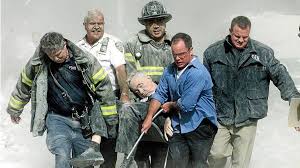Exploring the Importance of Casualty Figures in Current Events

The Importance of Casualty Figures
Casualty figures play a crucial role in understanding the impact of various events, including natural disasters, military conflicts, and public health crises. These numbers reflect not only the immediate human toll but also signal the broader consequences for societies, economies, and policy responses. Accurate reporting of casualties is vital for raising awareness, shaping public opinion, and driving governmental and humanitarian actions.
Recent Events Highlighting Casualty Figures
In recent weeks, the world has witnessed several devastating incidents resulting in significant casualties. For instance, the catastrophic earthquake in Turkey and northern Syria on February 6, 2023, has reported casualties exceeding 60,000, with millions affected by the destruction. The international community mobilised quickly, with aid organisations rushing in to provide support. These staggering figures not only shed light on the immediate need for humanitarian assistance but also emphasise the long-term recovery efforts required for the affected populations.
Similarly, the ongoing conflict in Ukraine has also resulted in alarming casualty numbers. According to various reports from both official sources and independent organisations, thousands of military personnel and civilians have lost their lives since the conflict escalated in February 2022. Understanding these casualty figures is essential for assessing the broader geopolitical landscape and the humanitarian crisis that continues to develop.
The Broader Impact of Casualties
Casualty figures influence national policy and international relations significantly. High casualty numbers can lead to public outcry, prompting governments to reconsider military engagements and foreign policies. Furthermore, they raise questions about resource allocation, emergency preparedness, and the effectiveness of governmental responses to crises.
In addition to influencing policy, casualties also affect the mental health of communities. Studies have shown that communities experiencing high casualty rates from conflicts or disasters often struggle with post-traumatic stress and a variety of socio-economic challenges, making it imperative for support systems to be in place.
Conclusion
As the world grapples with increasing challenges, understanding the significance of casualty figures has never been more important. They provide a clear indication of the human cost of events, shaping the narrative surrounding conflicts, natural disasters, and health crises. Accurate data on casualties not only drives humanitarian efforts but also informs public policy discussions, steering societies towards resilience and recovery. Moving forward, it is essential for governments and organisations to prioritise detailed and compassionate reporting on casualties, recognising the profound implications these numbers represent for individuals and communities around the globe.








